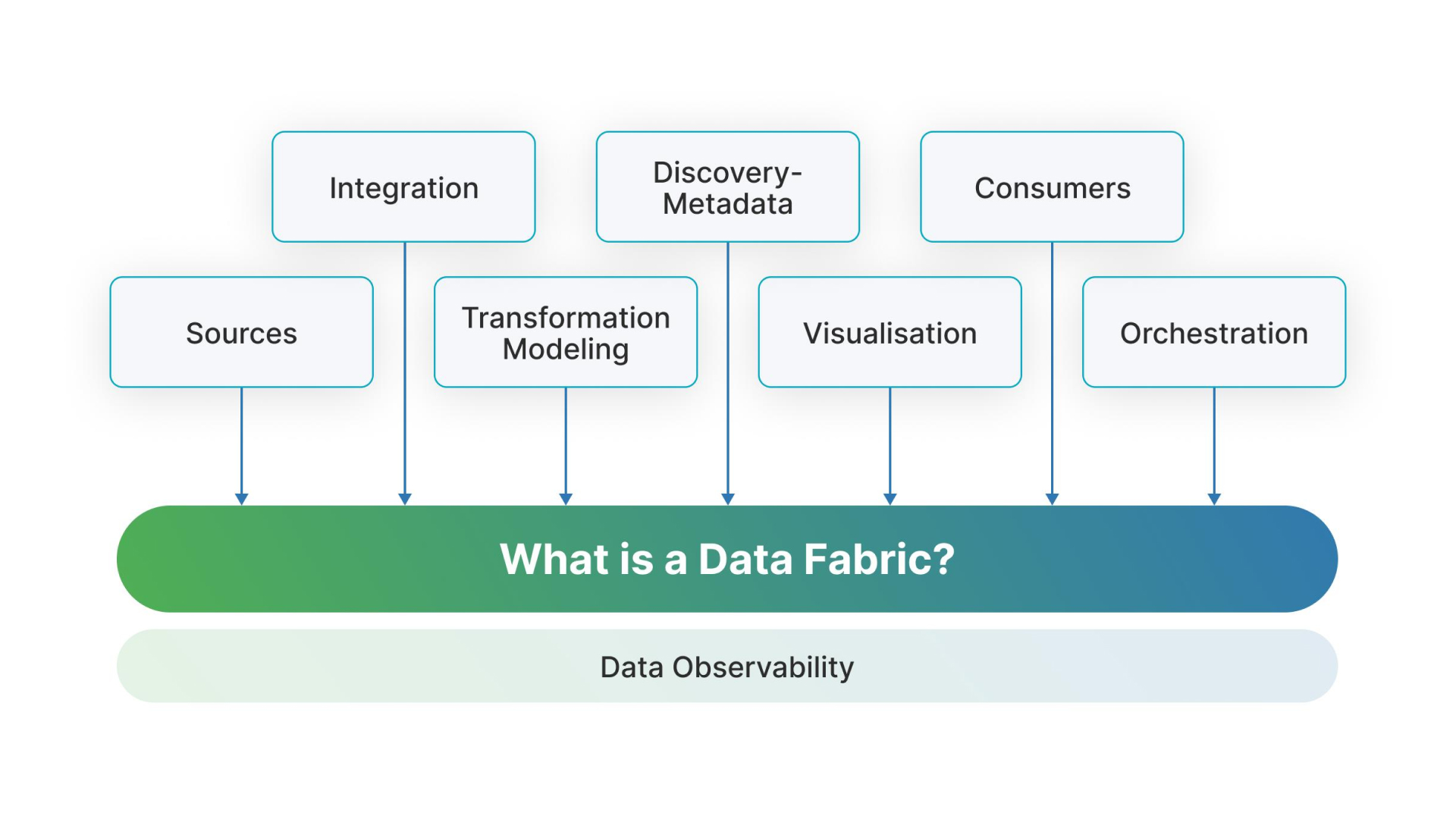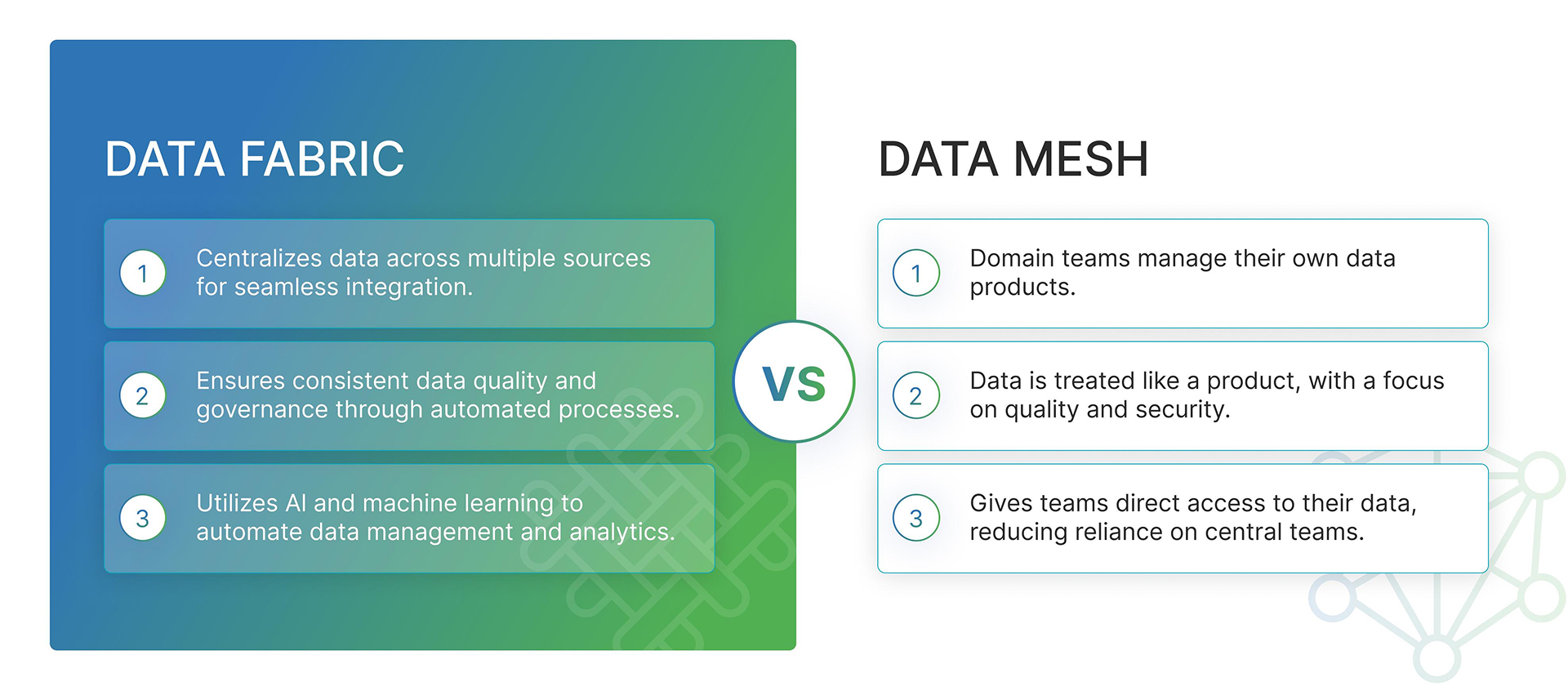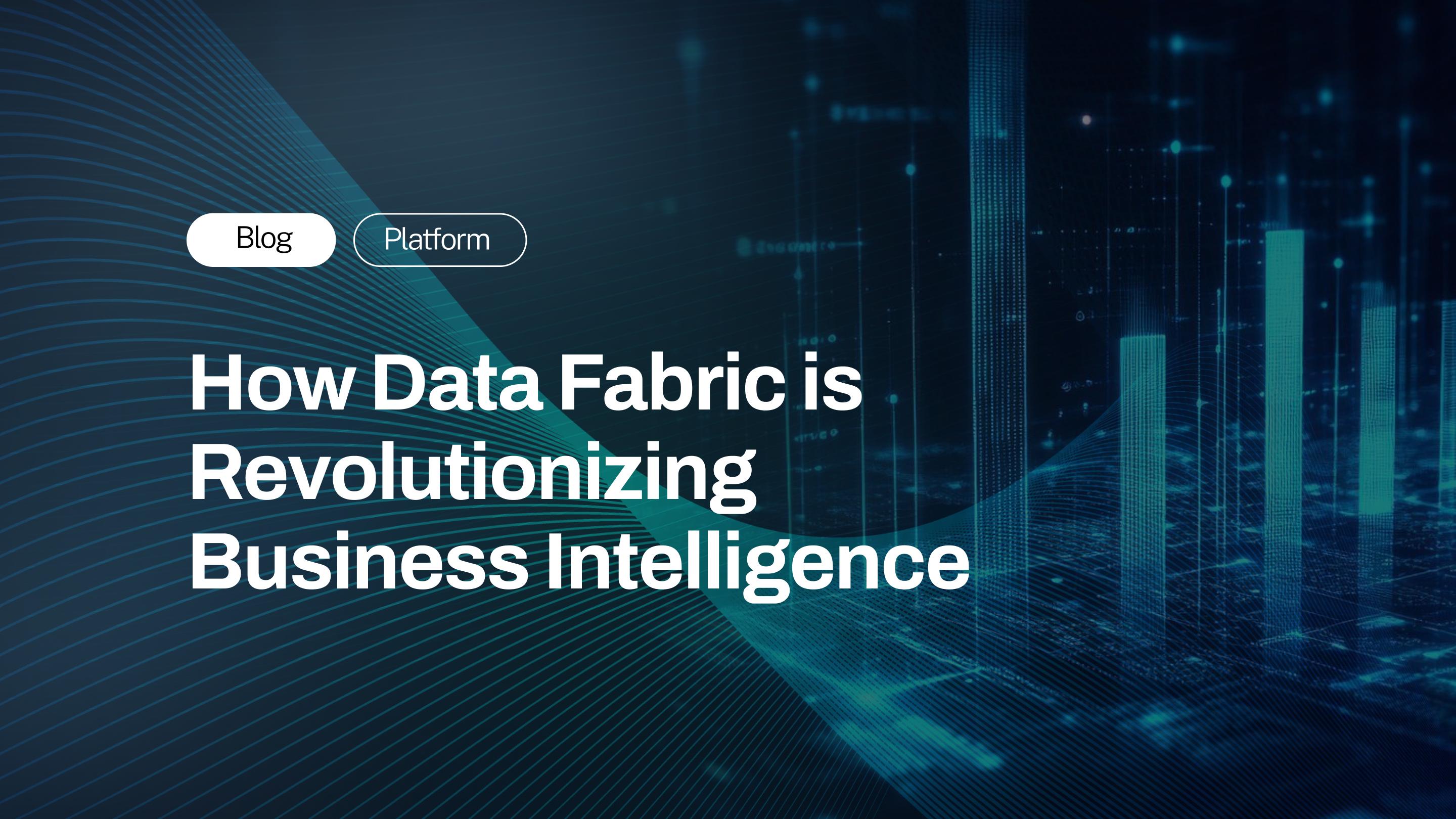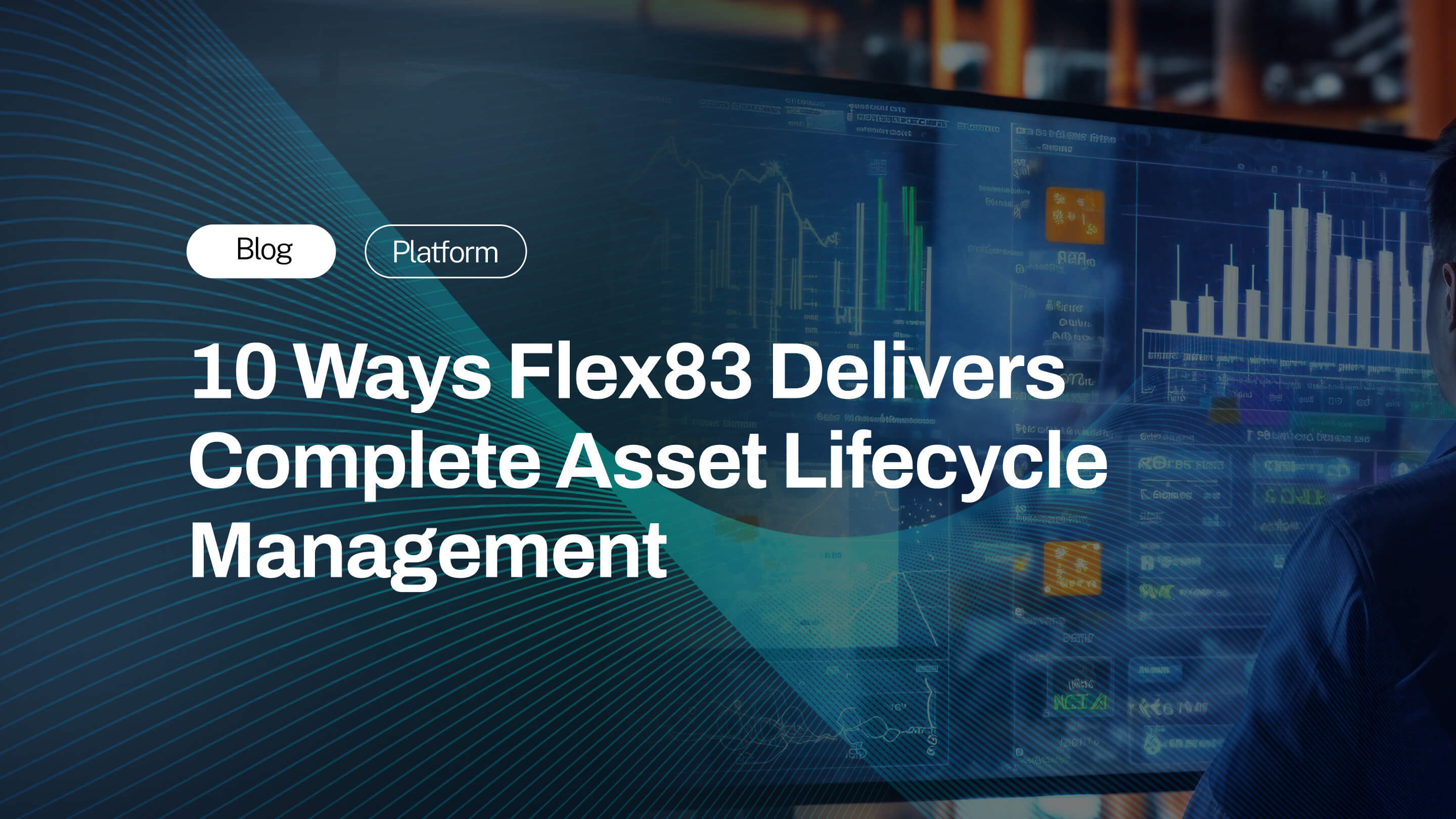In an era where enterprises generate data at an unprecedented pace—with 68% of businesses struggling with data silos and 82% suffering from fragmented data architectures—the need for a unified data management approach has never been more critical. Enter data fabric: a revolutionary architectural pattern that's transforming how businesses access, integrate, and leverage their most valuable asset—data.
The numbers speak volumes about the urgency. Most businesses fail to analyze 68% of their data, while McKinsey research reveals that data-driven organizations are 23 times more likely to acquire customers, 6 times as likely to retain customers, and 19 times more likely to be profitable. This stark reality is driving enterprises toward data fabric solutions at breakneck speed.
.jpg)
The global data fabric market, valued at $2.81 billion in 2023, is projected to reach an astounding $13.0 billion by 2035, representing a compound annual growth rate of up to 30%. This explosive growth reflects not just market hype, but genuine business transformation powered by unified data architectures.
What Is Data Fabric?
Data fabric is a distributed data management framework that enables access, integration, and processing of data across multiple sources and formats. Unlike traditional data architectures that create bottlenecks and silos, data fabric acts as a digital nervous system that connects all data sources and systems within an organization.

At its essence, data fabric provides a unified data infrastructure that enables real-time data access, integration, and management across hybrid and multi-cloud environments. It's not merely a technology—it's an architectural approach that abstracts data management complexity while delivering data with agility and scale.
The key differentiator lies in its approach: while traditional systems require extensive manual configuration and maintenance, data fabric leverages AI and machine learning to automate data discovery, integration, and governance.
Gartner research shows data fabric can reduce time for integration design by 30%, deployment by 30%, and maintenance by 70%.
What is Data Fabric Architecture
A comprehensive data fabric architecture comprises seven core layers, each serving critical functions in the data ecosystem:
- Data Governance & Security Layer: This foundational layer implements robust policies for data access control, quality management, and compliance. It employs augmented data catalogs to classify, and inventory distributed data assets while managing metadata across the entire fabric.
- Data Lineage Layer: This layer documents the complete flow of data throughout its lifecycle, using metadata activation to track transformations and ensure data reliability. This layer is essential for compliance and enables businesses to verify data accuracy and trace error sources.
- Data Integration Layer: Enables data preparation and creates unified information views by consolidating data from disparate sources through ETL/ELT, API-based integration, data replication, streaming, and virtualization techniques.
- Data Modeling & Interpretation Layer: The data modeling and interpretation layer organizes corporate data using knowledge graphs and defines relationships between data assets. Semantic enrichment allows business users to interact with data using familiar business terms rather than complex technical queries.
- Data Orchestration Layer: Coordinates data workflows and regulates data movement through various processing stages. Powered by machine learning algorithms, this layer produces intelligent alerts and recommendations for data organization and processing.
- Data Processing & Analysis Layer: The data processing and analysis layer handles the actual data manipulation, data querying, and analysis, presenting results through reports and dashboards tailored to business needs.
- Data Access Layer: Facilitates data delivery to multiple downstream consumers, including applications, analytics teams, and data marketplaces, while monitoring system health and performance.

How does Data Fabric Works: From Ingestion to Consumption
Data fabric operates through intelligent automation and seamless connectivity. The architecture offers a "plug and play" environment for any type of front-end interface, enabling insights to flow directly to business applications.
Knowledge graphs serve as the backbone, analyzing relationships among data sources and converting all types of data to a consistent format. This eliminates processing bottlenecks and creates a unified data layer spanning from source-level data through analytics, insights generation, orchestration, and applications.
Automation extends to metadata detection and integration, allowing for bidirectional integration with virtually any component of a technology stack, creating a truly woven architecture.
Benefits of Implementing Data Fabric
The business impact of data fabric implementation is both immediate and transformative:
- Operational Excellence: Gartner studies show data fabric can reduce operational costs by 20-30% while cutting data access and preparation time by 40-60%. Businesses report average reductions of 27% in production cycle times and 65% improvement in production planning time.
- Enhanced Decision-Making Speed: OEMs and industrial/commercial enterprises implementing data fabric solutions achieve 30% reduction in time-to-insight and 40% improvement in data processing efficiency. This acceleration enables real-time decision-making and responsive business operations.
- Cost Optimization: As per Forrester, data fabric architecture contributes to huge cost optimization by unifying data, complex task automation, improved data accessibility. This reduces efforts and resource cost needed for data integration, analytics, and governance.
- Business Growth Impact: McKinsey research demonstrates that data-driven organizations show EBITDA increases of 15%-25%, directly linking data fabric capabilities to bottom-line business performance.
Data Fabric vs. Vs. Data Mesh

Comparison of data mesh and data fabric highlighting their core principles and differences in modern data management approaches.
Data Fabric vs. Traditional Approaches
Traditional data warehouses and lakes create centralized repositories that often become bottlenecks. Contrary to that, data fabric creates a distributed architecture that maintains data in its original locations while providing unified access. This approach eliminates the need for massive data movement and reduces latency significantly.
Data Fabric vs. Data Mesh
While both approaches aim to democratize data access, their methodologies differ fundamentally:
- Data Fabric is technology-centric, leveraging automation and AI to integrate data across systems while maintaining centralized governance
- Data Mesh is organizationally focused, emphasizing decentralized ownership where domain teams manage their data as products
- Data fabric tends toward centralized management with automated processes.
- Data mesh advocates decentralization and domain-driven design.
How to Implement Data Fabric
Successful data fabric deployment requires strategic planning and phased execution:
- Business Requirements Assessment: Begin with comprehensive stakeholder meetings to understand data requirements, KPIs, and current pain points. This foundation ensures the data fabric architecture addresses real business needs.
- Current State Evaluation: Conduct thorough assessment of existing data infrastructure, identifying gaps, redundancies, and integration opportunities.
- Governance Framework Development: Establish robust policies for data access, quality control, compliance, and privacy before technical implementation.
- Security-First Design: Embed security measures at every layer of the data fabric architecture, from ingestion through storage, processing, and access.
- Phased Implementation: Adopt incremental integration approaches that minimize business disruption while demonstrating progressive value.
Data Fabric Challenges and Implementations
Despite its transformative potential, data fabric implementation presents several challenges:
- Legacy System Integration: Overcoming legacy systems and data silos presents significant challenges. Businesses must develop strategic approaches involving incremental integration, middleware solutions, and gradual modernization.
- Complexity Management: Integration of multiple custom and standard systems poses challenges for businesses with diverse legacy systems and multi-cloud infrastructures.
- Skills and Cultural Gaps: Achieving stakeholder buy-in can be difficult as data fabric benefits are sometimes intangible or long-term. OEMs and enterprises need clear communication about strategic advantages and comprehensive training programs.
- Regulatory Compliance: Data fabric's multi-domain approaches create challenges in regulatory compliance, particularly in heavily regulated industries.
Data Fabric Trends: AI, Automation, and the Evolving Role of Data Fabric
The future of data fabric is intrinsically linked to artificial intelligence and automation advancement:
- AI-Powered Automation: Gartner predicts that by 2025, 65% of enterprises will use data fabric to streamline integration, driven by increasingly sophisticated AI capabilities that automate data discovery, classification, and governance.
- Real-Time Analytics Evolution: Many businesses are moving toward immediate insight generation, with data fabric enabling real-time analytics and decision-making across distributed environments.
- Semantic Layer Advancement: Enhanced knowledge graphs and semantic understanding will make data more accessible to business users, reducing dependency on technical teams for data access and analysis.
- Hybrid Cloud Maturation: As North America leads with 41% share in the cloud data fabric sector, hybrid and multi-cloud deployments will become standard, requiring more sophisticated data fabric solutions.
Conclusion: Embracing Data Fabric for Digital Transformation
The evidence is compelling: data fabric isn't just a technological upgrade—it's a strategic imperative to thrive in the data-driven economy. With 78% of businesses now using AI in at least one business function, the demand for unified data architectures will only intensify.
The path forward requires commitment, strategic planning, and phased execution. Businesses that embrace data fabric today position themselves to capture the finest share of customer acquisition advantage with data-driven operations.
As the global data fabric market continues its 30% annual growth trajectory toward $13 billion by 2035, early adopters will establish competitive advantages that become increasingly difficult for others to match.
The question isn't whether your organization needs data fabric—it's how quickly you can implement it effectively.
The future belongs to those who can seamlessly access, integrate, and activate their data assets. Data fabric provides the architectural foundation to make that future a reality today.
Ready to explore how data fabric can transform your organization's data strategy? Get a free trial here: https://www.iot83.com/free-trial






.jpg)

%20(1).jpg)

